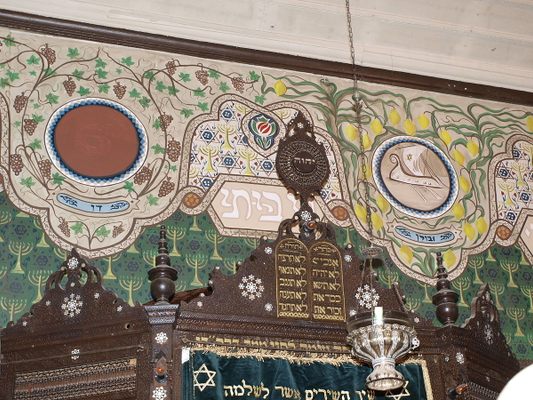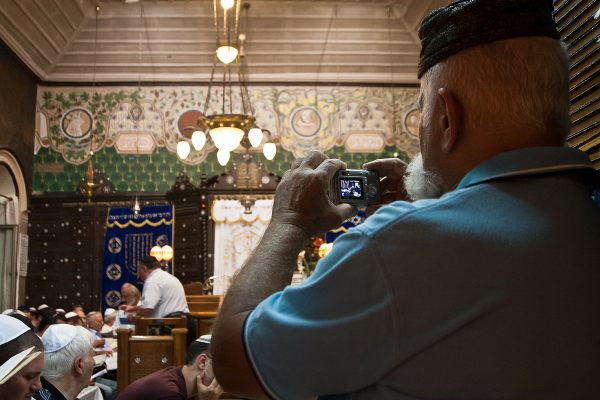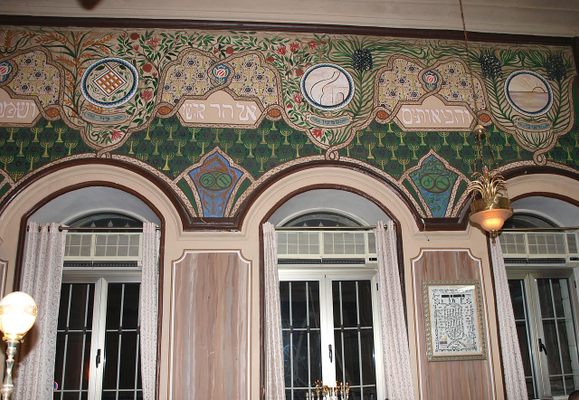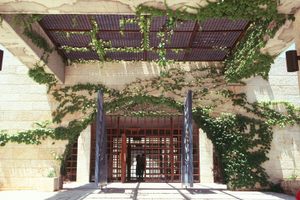About
While many of the world's major religions lay claim to a number of truly monumental architectural and decorative achievements, Judaism has traditionally maintained a simpler ascetic aesthetic, but not all of their houses of worship are so simple. Also known as the "Great Synagogue" the Ades Synagogue in Jerusalem for instance is home to an ornate series of murals that were created as a work of uniquely Jewish devotional art.
The Ades Synagogue was founded in 1901 by a group of Syrian immigrants who wanted to build a grander place of worship than the more impromptu shacks that served the area at the time. Once completed, the synagogue quickly gained acclaim for its elaborate decoration and design. While the space itself was not astonishingly large, it was packed with flourishes such as a pearl inlaid Torah ark and decorative wooden benches.
However the most stunning feature of the synagogue were the murals painted near the ceiling by young artist Yaakov Stark. The painter created a long trim of delicate Middle Eastern-inspired designs that highlighted symbols representing the 12 Tribes of Israel. Unfortunately even these monumental murals eventually fell victim to a bit of artistic carelessness.
Despite the site being hailed at the "Great Synagogue," after nearly a century in existence the artworks had fallen into disrepair. By the mid to late 2000s a misguided restoration project began that saw the original works covered up and repainted by a less than skilled hand. Luckily conservationists were alerted and the paintings were saved from complete elimination.
Restoration efforts continue to this day ensuring that the Ades Synagogue can take a place in history next to other religious artistic triumphs around the world.
Related Tags
Community Contributors
Added By
Published
January 8, 2015

























